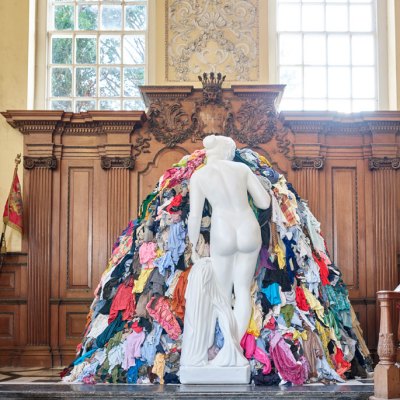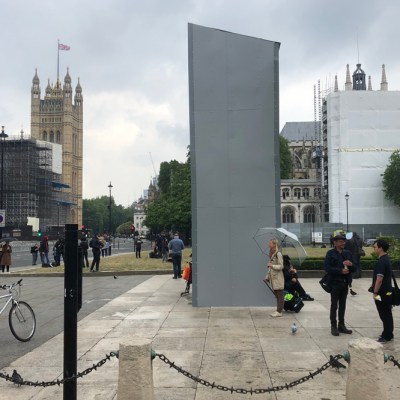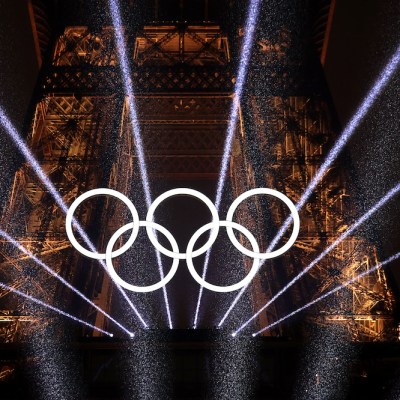A few miles outside Oxford, a hulking baroque edifice stands amid 12,000 acres of sprawling parkland. Blenheim Palace has been in the hands of the Spencer-Churchill family since the early 18th century, when the land on which it stands was given by Queen Anne to John Churchill, 1st Duke of Marlborough as reward for a military triumph at the Battle of Blenheim in 1704. The Duke is memorialised in a 40m-high victory column in the surrounding grounds, but the most notable member of the family is Winston Churchill, who was born in a small bedroom in the Palace and buried 90 years later in a churchyard just outside the grounds. Blenheim is grand and maximalist, many of its rooms tightly crammed with objects including portraits, busts, tapestries, ornate clocks, porcelain and glittering candelabra. The place is a paean to bombast, war, aristocracy, imperialism and great man history; in other words, an emblem of a certain kind of Englishness. Wandering round can be awe-inspiring, claustrophobic and alienating all at once.
For those not immediately charmed by Blenheim’s interior, the exhibition currently being hosted there is a balm. ‘Mohammed Sami: After the Storm’ is a show of 14 paintings by the Baghdad-born artist, an intelligent takeover of the house through works that reframe and reinterpret the palace’s history and mores. Sami is the ninth artist to be commissioned by the Blenheim Art Foundation, following, among others, Jenny Holzer, who in 2017 projected LED testimonies by war veterans on to the facade and throughout the interior, and Maurizio Cattelan, who in 2019 staged a provocative show that included a model of Hitler in the library and a plumbed-in solid gold toilet in the loos.
Installation view of The Statues (2024) by Mohammed Sami in ‘After the Storm: Mohammed Sami at Blenheim Palace’, 2024. Photo: Tom Lindboe; courtesy Blenheim Art Foundation; © the artist
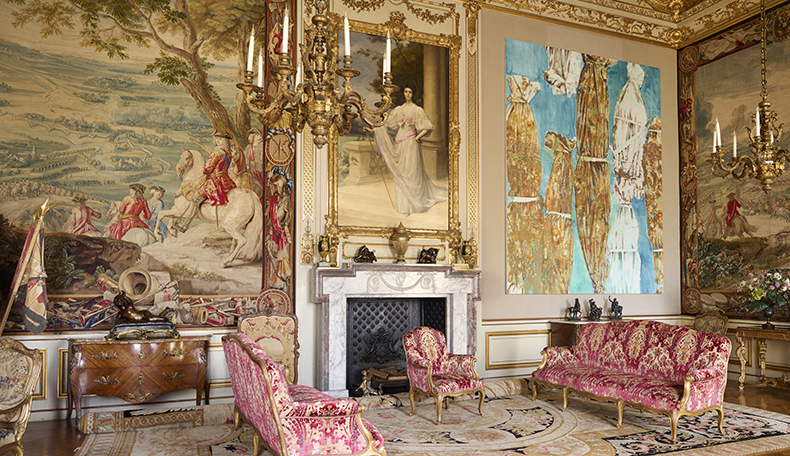
Sami grew up under Saddam Hussein’s regime and witnessed the invasion of Iraq in 2003, before moving to Sweden and then London, where he now lives and works. His skilful paintings are often marked with motifs of conflict, but in subtle ways that bring in shadows and trompe l’oeil. Sami likes to play with perception and fuel ambiguity: the show opens with The Grinder (2023), a view from above of a round table and four empty chairs, with an eerie shadow – a ceiling fan, or perhaps helicopter blades, or something else altogether – splayed over the scene. The Statues (2024), hung in the First State Room next to one of the lavish Blenheim Tapestries, which were woven in the workshop of Judocus de Vos between 1707 and 1717 to commemorate the battle, is a different kind of war memorial: an exhilarating study in dynamism filled with falling objects, which the title suggests are covered statues but could equally be bombs or body bags.
Sami’s paintings are not just site-specific but room-specific, many of them gently subversive responses to the very space itself: a canvas of deep red, with shards of broken plates scattered on the floor and a broom – or is it a gun barrel? – propped against a wall, hangs at the end of a corridor flanked by cabinets of Meissen and Sevres porcelain. A portrait in the grand manner by George Romney of George Spencer, 4th Duke of Marlborough (1739–1817) has been removed from its usual spot in the Green Drawing Room and replaced with a sheet of linen, painted to match the wallpaper of the room and riddled with bullet holes. In the Red Drawing Room, what seems to be a piece of MDF with a shadow of a chandelier painted over it and the date of the invasion of Iraq, 03/2003, printed in the corner has been hung on the adjacent wall to Sargent’s elegant portrait of the 9th Duke and his family (1905). Such interventions are so well-camouflaged amid the decor that it takes a few seconds to spot them. The curation is, by contrast, somewhat underwhelming in the Saloon, which visitors will enter to find a large painting of the Baghdad skyline bathed in radioactive orange plonked in the middle of the room – a pleasing work to look at, but conceptually disengaged from the space around it.
Installation view of Stiff Head (2024) by Mohammed Sami in ‘After the Storm: Mohammed Sami at Blenheim Palace’, 2024. Photo: Tom Lindboe; courtesy Blenheim Art Foundation; © the artist
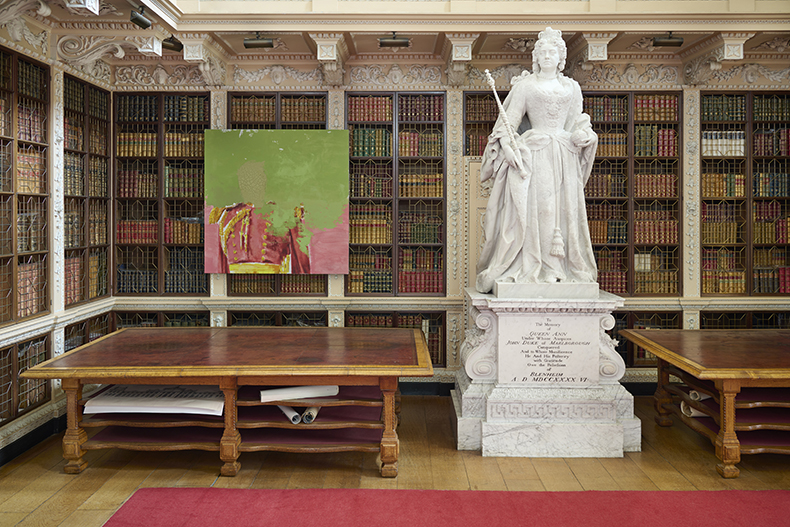
Portraits are the lifeblood of Blenheim, and many of them are lovely, but seen together they are so numerous that the individuality of each is lost, all blending into one unwieldy mass of aristocrats. Perhaps that excess is intentional, part of a shoring up of the family lineage by prizing clanship over individuality. Sami’s portraits – or perhaps anti-portraits is more accurate – hint at this odd sensation of anonymity, threaded through as they are with ideas of absence and dissemblance. There are three depictions of men in military dress throughout the show, each one’s head obscured by a rude smear of paint. And then there is Immortality (2024), a painting of Churchill, his face and body completely blacked out as if in photo-negative, but the posture – based on the ubiquitous portrait of him by Yousuf Karsh – instantly recognisable. It’s the simplest and most effective work here, hinting at the ways in which Churchill has to a large extent become a blank canvas on to which various people project their own feelings, desires and dogmas, and alluding to the proscription in some branches of Islam against depicting people. Here, Sami also mounts a gentle but serious challenge to Britain’s ideas about itself, performing an act of reinterpretation for a country in which, for many, the wartime prime minister has become close to an idol.
Installation view of Immortality (2024) by Mohammed Sami in ‘After the Storm: Mohammed Sami at Blenheim Palace’, 2024. Photo: Tom Lindboe; courtesy Blenheim Art Foundation; © the artist
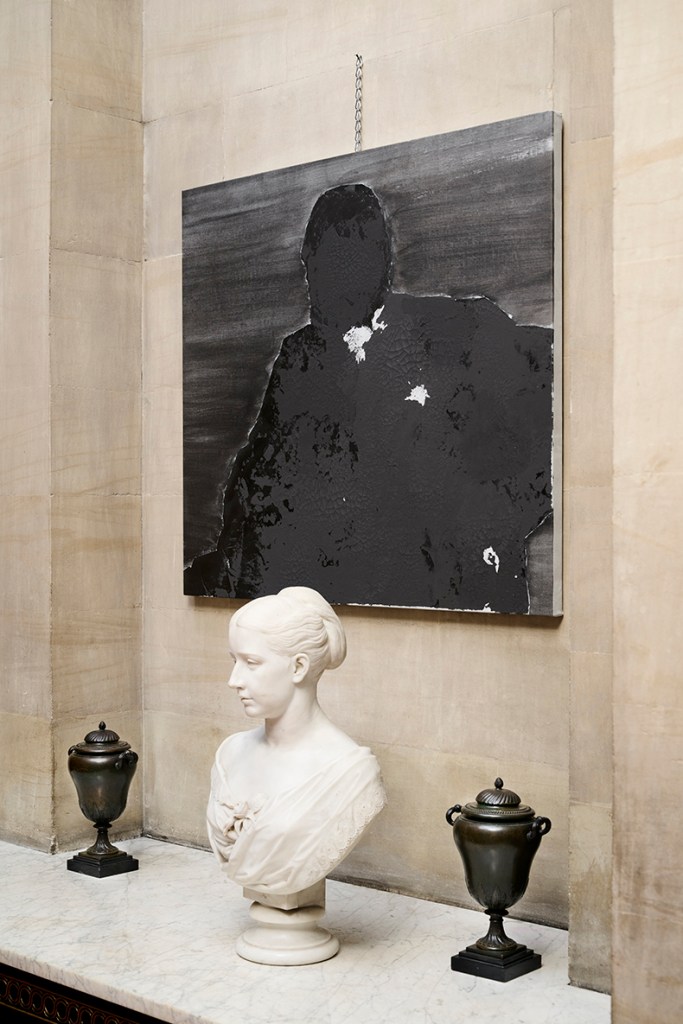
‘After the Storm: Mohammed Sami’ is at Blenheim Palace until 6 October.

